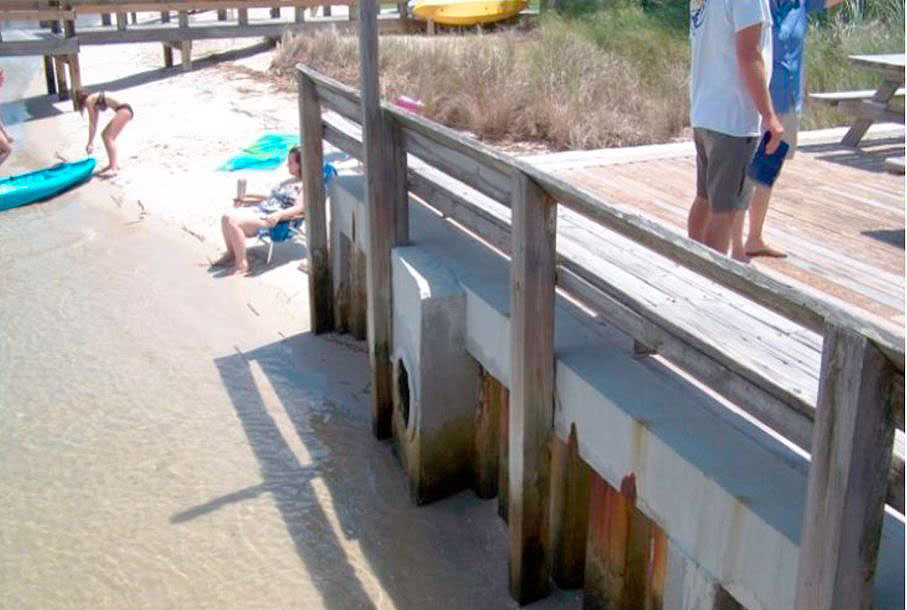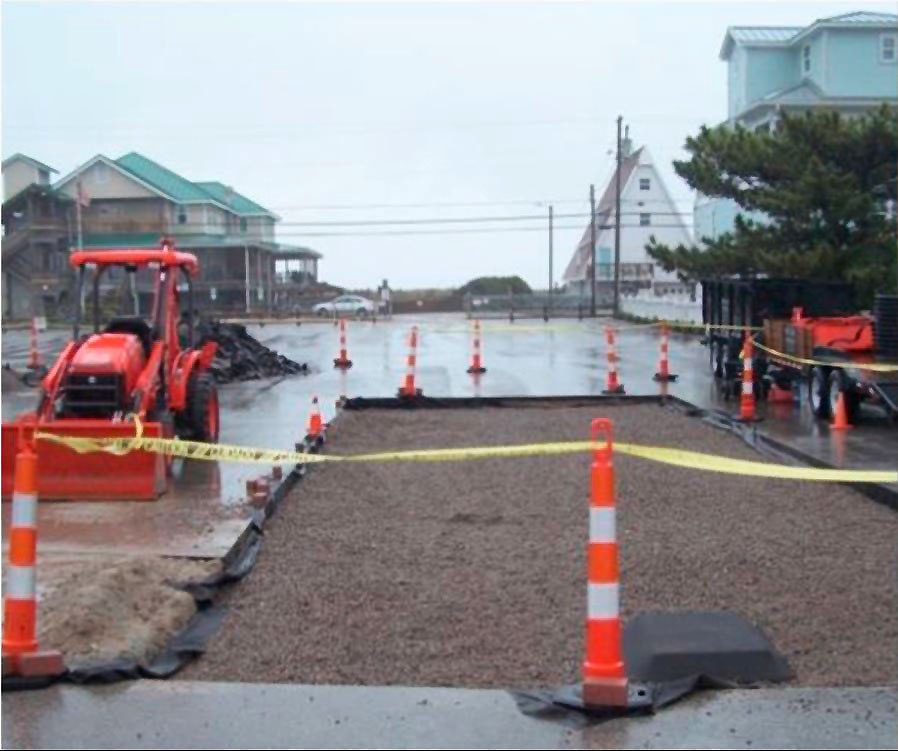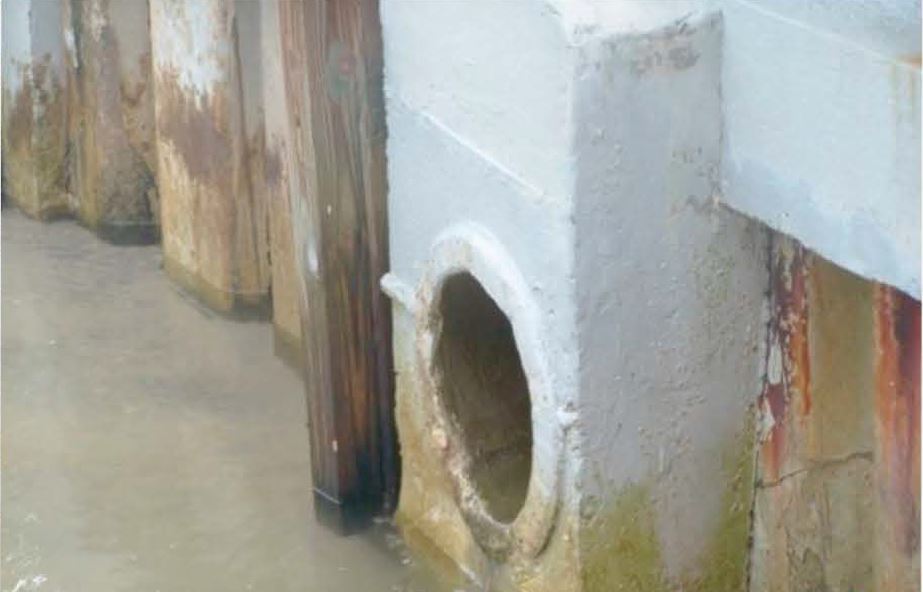
In America’s bays and estuaries, stormwater runoff is the second largest cause of water degradation. North Carolina’s coastal watersheds are no exception, making stormwater management techniques necessary to preserve the quality of the state’s waters.
A study published in the Journal of Environmental Management in January by Amy Grogan and Michael Mallin of the Center for Marine Sciences, University of North Carolina Wilmington, examined the effectiveness of a set of stormwater best management practices, or BMPs, implemented at a study site in Wrightsville Beach.
Supporter Spotlight
The study, “Successful mitigation of stormwater-driven nutrient, fecal bacteria and suspended solids loading in a recreational beach community” found that the BMPs implemented in Wrightsville Beach had reduced the overall amount of contaminants in the study area.
Wrightsville Beach is an island community on the North Carolina coast near Wilmington. Running between the town’s two islands is Banks Channel, an estuarine sound dotted with boat docks, a beach and places to rent kayaks and paddleboards.
The study looked at the drainage area of two particular stormwater outfall pipes that drain into Banks Channel. Like many urbanized areas of the coastline, the study area in Wrightsville Beach was high in impervious pavement. Impervious pavement does not allow water to seep into the ground, instead it’s washed into the waterways. It carries with it any contaminants it has come into contact with. Stormwater pollution has been identified as an issue meriting attention in the Wrightsville Beach community.
Funding for the project was provided by the North Carolina Coastal Federation, using a grant from the North Carolina Land and Water Fund, formerly known as the North Carolina Clean Water Management Trust Fund. The Coastal Federation publishes Coastal Review.
A BMP system was installed to replace impervious pavement with pervious pavement, designed to let stormwater seep into the ground, at the Hanover Seaside Club in Wrightsville Beach. An infiltration chamber also was built in the parking lot. This BMP system was installed in the spring of 2018.
Supporter Spotlight

Mallin and Grogan’s study endeavored to test the efficacy of the BMPs at the study area. They tested stormwater discharge in the two outfall pipes into Banks Channel both before and after the installation of the BMPs. They tested for things like fecal bacteria, suspended solids and nitrogen. In coastal communities, high levels of nitrogen can be the canary in the coalmine for more significant issues.
“(When) you load nitrogen in the water, you increase your chances of causing an algal bloom,” Mallin said. “And some of these blooms might be toxic.”
Harmful algal blooms have become increasingly common in the United States. Because they can be destructive to the ecosystems in which they occur and produce toxins that are poisonous to humans,there is significant interest in monitoring nitrogen levels in waterways.
Mallin and Grogan found that the BMP system reduced overall stormwater runoff by 62%. Total nitrogen was decreased by 87% and the fecal contamination indicator bacteria enterococcus by 76%. Mallin considers these overall results to indicate that the BMPs were successful in ways that can positively impact the community of Wrightsville Beach.
Water quality is significant not just to the habitats and ecosystems in contact with Banks Channel, but to the local economy and residents as well. In warm weather, Banks Channel is a popular spot for sunbathers, swimmers and kayakers. These are all tourist activities that depend on water quality.
Shellfish growers in the area are also directly dependent on water quality for their line of work. When fecal microbial pollution reaches high levels in coastal waters, shellfish farmers have to shut down their operations. For an island community like Wrightsville Beach, the usability of the channel is significant to the local economy.
“That becomes not only a health thing, but it’s an economic pressure on the local municipality,” Mallin said.
According to Mallin, these BMPs demonstrated success in Wrightsville Beach, but could also prove useful in comparable coastal communities, as well as certain inland riparian habitats. That being said, the efficacy of BMPs has to be individualized to different study areas.
“The BMPs that work in one location may not work in another one, depending on the geology of the area,” Mallin said. A lot of it depends on the type of soil. Wrightsville Beach is very sandy, and comparable areas may see similar results.
While the overall numbers indicate success, the breakdown between the two pipes studied shows that even though enterococcus decreased in the north pipe after installing the BMPs, it actually increased in the south pipe.

According to Dr. Rachel Noble of the University of North Carolina Institute of Marine Sciences in Morehead City, this shows that the efficacy of BMPs like these is an ongoing conversation.
Much of Noble’s work has focused on water quality and microbial contaminants, and she was part of a research team that identified stormwater in the Wrightsville Beach area as contaminated and meriting further study. Noble says there is a bigger picture of systemic issues that cause this pollution.
“We can’t continue to develop the coast and increase impervious surfaces without attention to promoting infiltration for rain and floodwater,” Noble said.
According to Noble, there are multiple pressures on North Carolina’s coastal systems that challenge effective stormwater management. These pressures include things like aging sewage systems, sea level rise, groundwater height and wastewater management. Furthermore, coastal topography doesn’t have much variability when it comes to gradient. This makes it hard to always make water move in the desired direction. The variability of the study’s results, said Noble, illustrates the complexity of the issue.
“There’s just no magic bullet,” Noble said.
So while Noble believes that BMPs like pervious pavement show promise and offer hope, systemic issues need to be addressed in tandem.
Noble said that the more information that can be gathered, the better coastal communities can do to keep heading in the right direction. And stormwater BMPs like this show promise for reducing certain contaminants.
“It shows some possibilities,” Noble said. “But there’s a lot more work to be done.”







